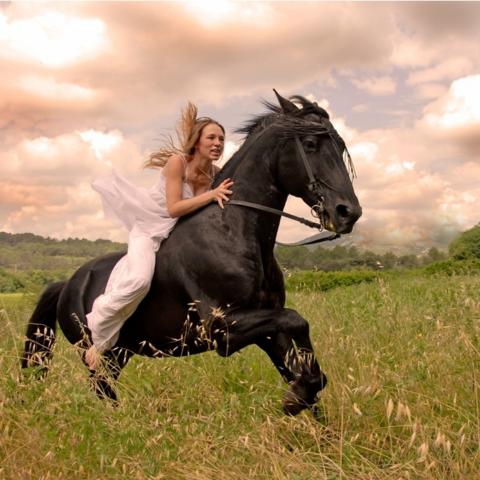Try HORSEBACK RIDING
 Mastering horseback riding skills enabled people, such as the Romans, the British and Native Americans, to expand their territories, seek out new food supplies and alter their lifestyles. Today, in modern societies, horseback riding is primarily a sporting or recreational event. Horseracing, rodeos and horseshows bring in spectators to watch the riders. At a horse show, competition events might include jumping or dressage. Dressage is a competition where the rider maneuvers the horse through a series of movements such as trotting, cantering and walking.
Mastering horseback riding skills enabled people, such as the Romans, the British and Native Americans, to expand their territories, seek out new food supplies and alter their lifestyles. Today, in modern societies, horseback riding is primarily a sporting or recreational event. Horseracing, rodeos and horseshows bring in spectators to watch the riders. At a horse show, competition events might include jumping or dressage. Dressage is a competition where the rider maneuvers the horse through a series of movements such as trotting, cantering and walking.Interesting facts:
-Cross-country jumps are marked with a red flag on the right side and a white flag on the left side; the horse has to jump through these two flags or it is considered out of bounds and you are disqualified.
-Mr. Ed, the talking equine star of the 1960s television series, was a golden palomino. He learned an enormous amount of tricks for his role, including answering a telephone, opening doors, writing notes with a pencil, and unplugging a light.
-A horse typically sleeps two and half to three hours a day
-Horses younger than 4 years can concentrate for a maximum of 10-15 minutes
-Horses lie down only about 43.5 minutes a day
-Horses began to evolve on the American continent over 60 million years ago, they later died out and were reintroduced by Spanish settlers
-No two horses are identical
-A horse's teeth can be used to estimate its age.
-The luckiest horse shoe of all, is one from the hind leg of a grey mare.
-If you hang a horseshoe upside down, the luck runs out.